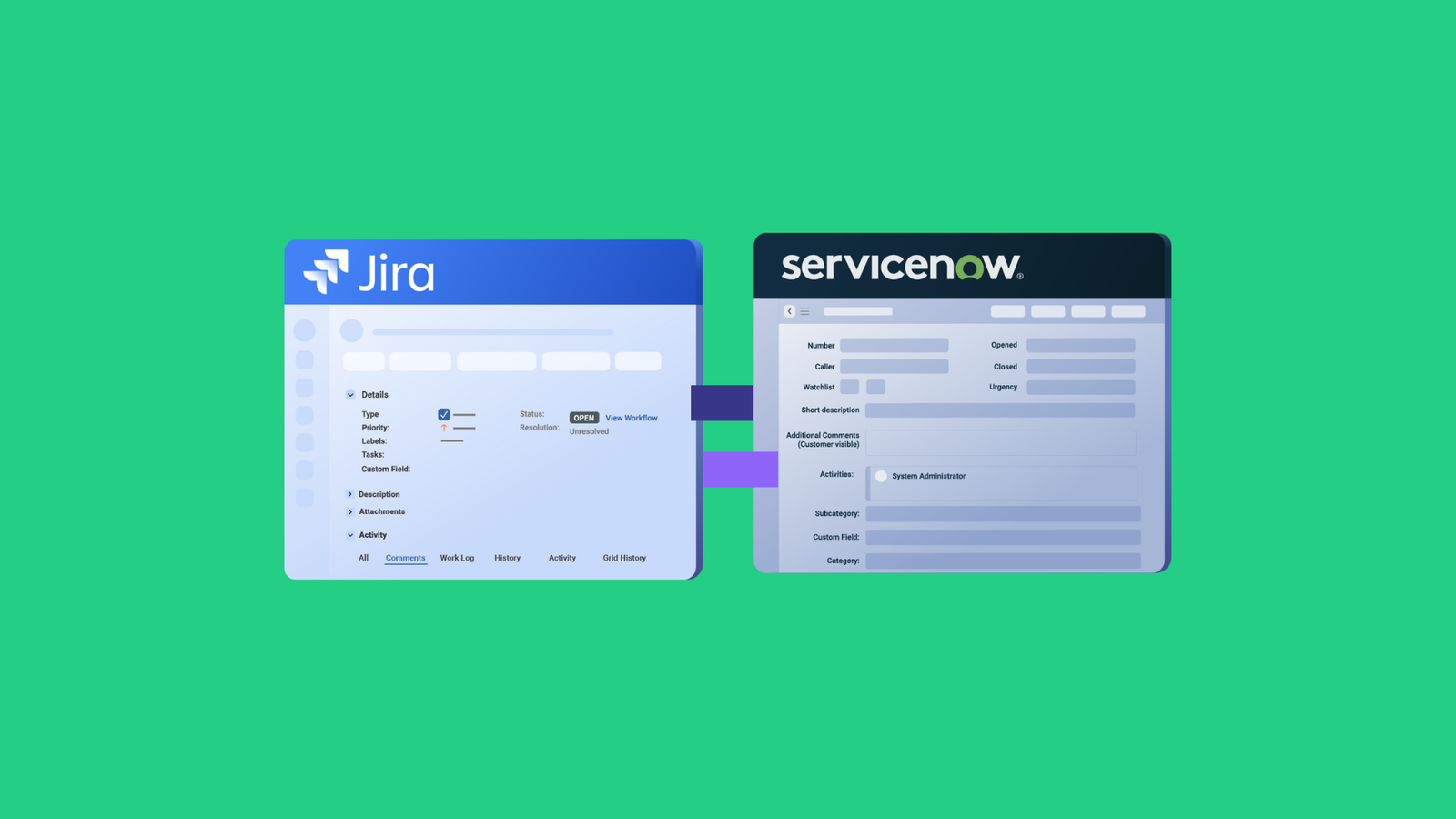Software is becoming more and more fundamental to business. No longer simply a tool, it’s the infrastructure we build our projects around. We use it to organize our teams, manage tasks and store the information that powers our work.
While there’s no shortage of specialized tools for business, you can run into problems when working with teams using different software. If you’re using incompatible platforms, then you can’t easily access each other’s data.
The information can be copied manually, but that takes time and is prone to error. For teams to share data effectively, a better solution is needed. That’s where an integration can help and here we are, digging a bit into CISCO smart bonding.
Jump to:
- What is CISCO Smart Bonding?
- Why Do You Need CISCO Smart Bonding?
- How to Get Started with Smart Bonding
- What to Look for in an Integration
What is CISCO Smart Bonding?
CISCO Smart Bonding lets you connect your IT service management (ITSM) systems to CISCO. You can share data between items on each system, keeping them in sync.

As well as exchanging case notes, you can share diagnostic and log files, and update them from your own setup. You do this via an encrypted API that provides push/pull capabilities. Your engineers need to work with it to control which data is shared.
Note: Read all about API integration.
It’s compatible with several major platforms, including Salesforce, HP and ServiceNow. It’s also free to use. CISCO provides documentation and test scripts to help you get started with it.
Why Do You Need CISCO Smart Bonding?
CISCO Bonding removes swivel chair inefficiencies from the process of data sharing. Once set up, it means engineers no longer have to waste time entering duplicate data into Cisco’s ITSM system.
With Smart Bonding, data transfer happens regularly and is error-free. If done manually, it’s the kind of task that gets overlooked, or done badly.
A missing, or inaccurate piece of data can have serious consequences for your business. Smart Bonding ensures data gets moved correctly.
With manual transfers, you also have to wait for data to be synchronized. An automated system can ensure data is always updated to a regular schedule. That means your teams have the information they need at their fingertips when they need it.

Users that set up Smart Bonding report a 20% to 54% reduction in case ownership time, a clear demonstration of its benefits.
How to Get Started with Smart Bonding
Smart Bonding uses an API to push and pull encrypted data into and out of your systems. To work with it, you need to configure your ITSM system to consume CISCO APIs. That’s a lot of upfront work for your developers, but the benefits should outweigh the costs.
As well as developers, CISCO recommends assigning a project manager to manage risk and ensure sufficient resources are available for the project. It also recommends a case manager to help developers interpret business requirements when building their solutions.
The typical development process consists of the following phases:
- Analysis – where you ensure your ITSM system is compatible with CISCO’s APIs.
- Implementation – where you connect your system to CISCO’s and test information transfer.
- Testing – where you use CISCO’s test plan to ensure everything is working as expected.
- Live – Where you deploy the system to production, test it, and start it working with real data.
CISCO’s team is available throughout this process to help you ensure it goes smoothly.
What to Look for in an Integration
Your integration needs to share the data you need, and do so when you need it. You may not want to share all your data, so there are several capabilities you need.
Firstly, you need to be able to control what is shared. That means specifying which fields are synced. An advanced integration can even modify or substitute some data, or make conditional decisions based on the data’s content. For example, you might want to share data from a specific region, or of a specific type.

You might want to limit what fields to share. If your engineers are integrating with a sales team, they might want to know about customer requests, but they don’t need the customers’ contact info.
Other Integration Options
Exalate is another tool for connecting software platforms. It lets you connect platforms using a no-code visual interface, or by scripting for more advanced use cases. It’s free to try out, and quick to set up.
Since it’s a ready-made system, you can have it up and running in minutes. Exalate enables teams working across different platforms like Jira, ServiceNow, Azure DevOps, GitHub, Salesforce, Zendesk, … to stay aligned. You can sync entities between those systems by using set defaults, or your own custom filters.
Conclusion
CISCO Smart Bonding makes integrating with other teams far easier. It automates the transfer of information, meaning you can share data in disparate software platforms.
Its flexible API lets you control the data flow in and out of your systems. Once set up, you can leave it in place to do your work for you, and your teams can get on with other things.
If setting up the initial integration seems like a hurdle, then there are other tools to help you with that part of the process. Exalate provides an easy-to-use system that can share data between your platforms without any developer involvement. It can also customize your data sharing to your exact requirements.
Book a call with an integration expert to see how Exalate can help you with your specific use case.
Recommended Reads:
- API Integration: A Practical Guide to Maximizing Business Efficiency
- Automated Integration: A Key to Scalable and Agile Business Operations
- The Comprehensive Guide to iPaaS (Integration Platform as a Service)
- Integration as a Service (IaaS): Everything Explained
- An Overview of Integrated Service Management (ISM)



